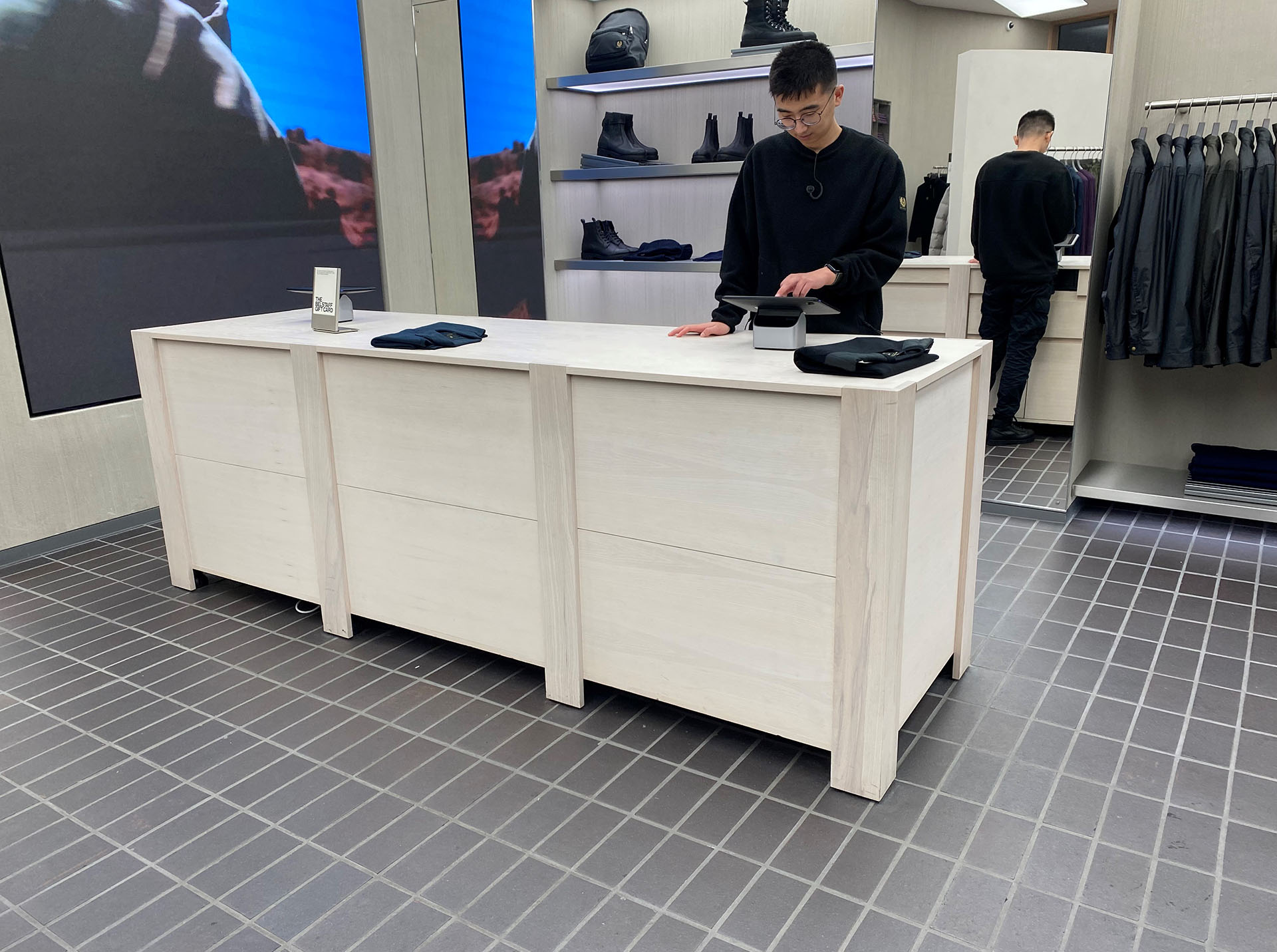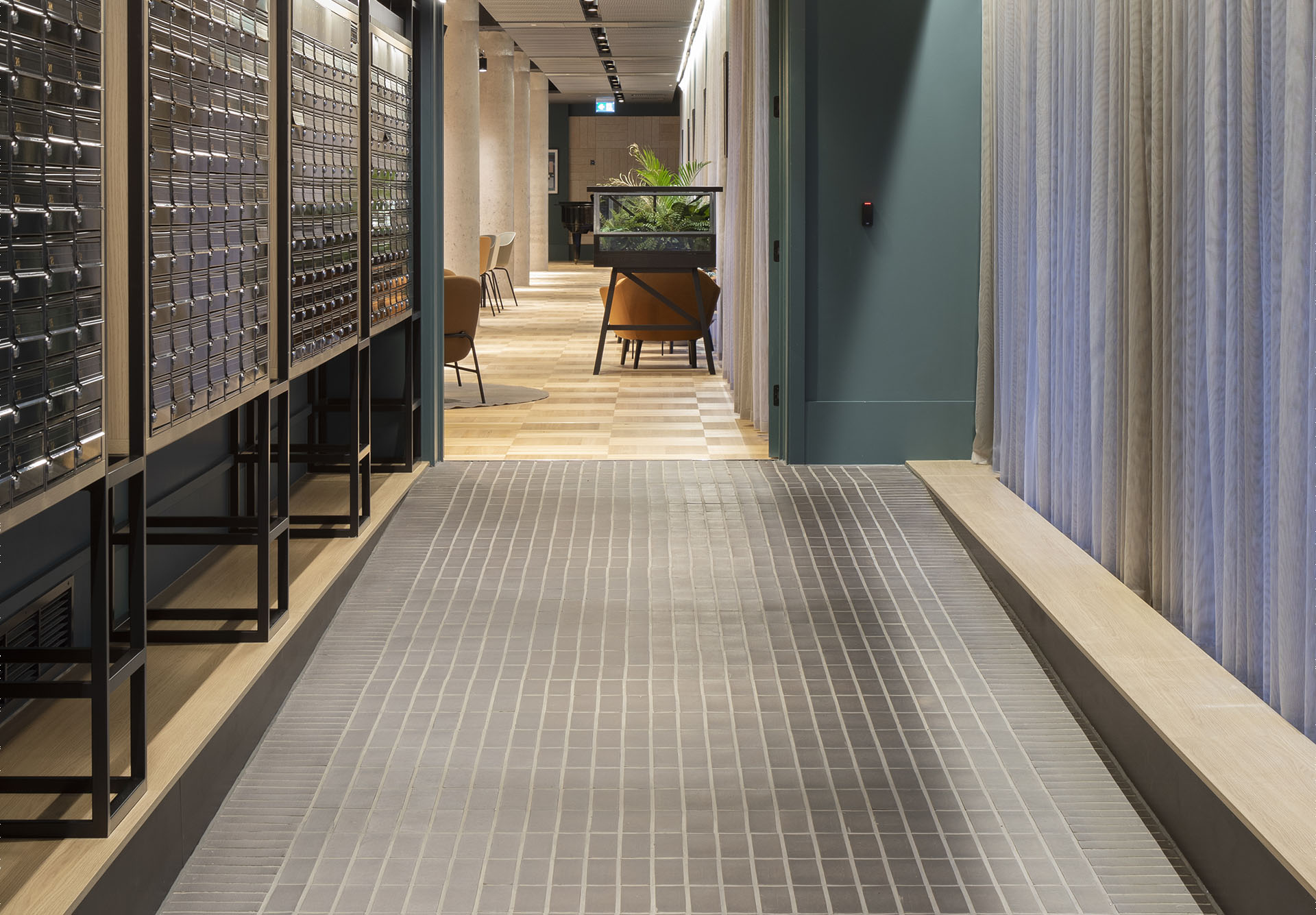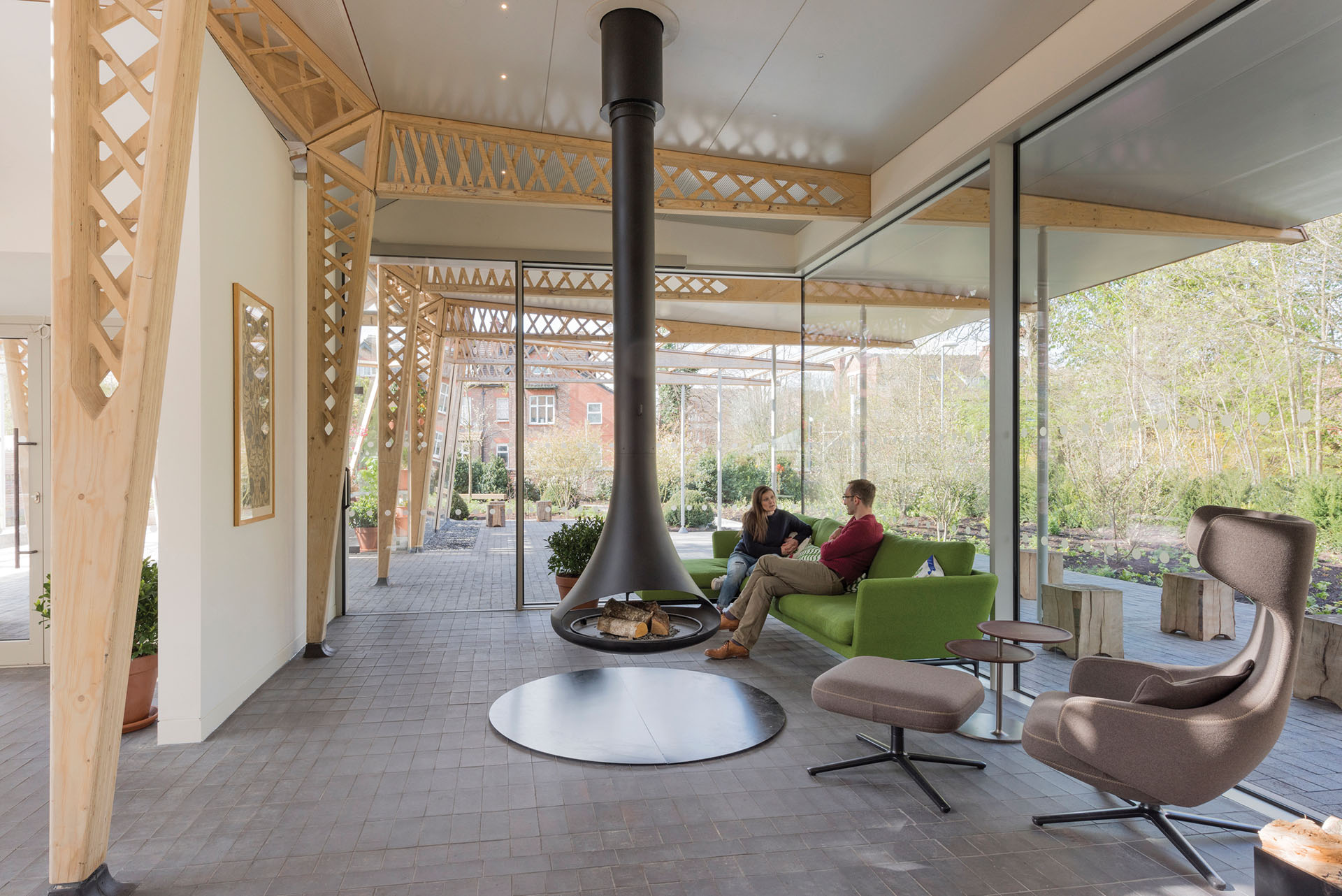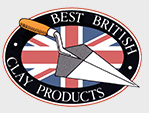Staffordshire blue quarry tiles

This is a very popular quarry tile in both contemporary and heritage schemes, and in commercial and domestic projects alike. Its traditional Staffordshire blue clay colour with its natural shade variations works well in Victorian restoration projects as well as in contemporary interior spaces bringing character and interest. Different effects can be achieved with different laying patterns.
![]() Frost resistant
Frost resistant
Suitable for exterior & interior
![]() High slip resistance
High slip resistance
Click here for more info
Category R11 C
Case Studies
Maggie Centre in Manchester


The Maggie Centre in Manchester, designed by Foster + Partners features Ketley Staffordshire blue quarry tiles in a stack bond inside the timber framed building and Ketley Staffs blue pavers extend out into the garden. The pallet of natural materials helps to create a calm environment and a light and homely space where people can relax. The Staffs blue paving on the veranda and in the garden blend perfectly with the staffs blue quarry tiles inside the building helping to bring the theraputic qualities of nature and the outdoors into the building, blurring the distinction between inside and out.
The Horseshoe Pub in Hampstead


This gastro pub underwent a major renovation by DG Professional Interiors and a new quarry tile floor was a key component of the new interior design. Rectangular staffordshire blue quarry tiles (in the brick size) have been laid in a herringbone pattern with a light coloured mortar.
Temper Restaurant Soho


The Temper Restaurant in Soho is a new basement barbecue restaurant designed by Gundry & Ducker Ltd that opened in November 2016. It was fitted out by Blue Crow Projects who used Staffordshire blue brick sized quarry tiles for the floor to great effect. They have used a running bond in the main areas and a stock bond on the raised floor around the bar. Matching Staffs blue brick slips also feature in a stock bond on the walls.
Imperial Pub in Chelsea


The Imperial is a local Chelsea icon; built in 1870 in the style of a grand villa, it has been a social meeting place on the King’s Road for nearly 150 years. Situated in a conservation area, this historically significant building has recently undergone interior renovations which were designed by Henri Chebaane at Blue Sky Hospitality. The new look successfully blends Victorian industrial heritage with contemporary chic using Ketley Staffordshire blue quarry tiles and brick slips on the wall of the bar.
Sudbury Courtyard


Sudbury Courtyard is a recently restored range of historic buildings, previously the Estate maintenance yard, now open as retail shopping outlets and a cafe in the heart of Sudbury village. Using traditional, authentic materials was very important to the developers in order to retain the atmosphere of this beautiful rural Estate set in the Dove Valley of South Derbyshire. They used both Staffordshire blue and Staffordshire brown brindle quarry tiles and sealed them which has the effect of darkening the tiles.
Fittings
Quarry Tile Fittings
These products shown here match our rectangular quarry tiles 102mm x 215mm. Similar products are available to match our squares 100mm x 100mm and 150mm x 150mm. Please contact us for further details.
Bullnose Stretcher
Bullnose Header


Bullnose Return


Ribbed Nosing


Environmental
Place of Manufacture: Brierley Hill, UK
Environmental Management: 14001 Download Certificate
Quality Management : 9001 Download Certificate
Life Cycle: BRE 'A+' rating
Freeze Thaw Testing to in excess of 400 cycles Download Freeze Thaw Test Certificate >>
Energy: Fired in gas kilns to 1130 degrees
Raw materials: Etruria Marl Clay from our local quarry in Brierley Hill, sand
Lifespan: > 60 years. Second hand tiles that have been on roofs in excess of 100 years often sell for more than new tiles on the 2nd hand market
Recyclability: Can be crushed and used as aggregate and/or as an inert bulk fill
Packaging: We keep packaging to a minimum using wooden pallets. We do not shrink wrap or use plastic straps.
Find out more about Dreadnought Tiles approach to sustainability
Tech Spec
Ketley Quarry Tiles for flooring
Standard: BS EN 14411:2012
Ketley Quarry Tiles are manufactured from the same clay, using the same processes as the Ketley 50mm and 65mm pavers and deliver the same technical characteristics of very low water absorption, very high strength and unrivalled frost resistance.
| Quarry Tile | Joint size | Coverage per m2 |
|---|---|---|
| 215x102mm | 10mm | 40 |
| 215x102mm | 6mm | 42 |
| 215x102mm | 5mm | 43 |
| 215x65mm | 10mm | 60 |
| 150x150mm | 10mm | 40 |
Packing On pallets - 1350 pieces on a pallet for 215x102mm size pallet weight (incl pallet) 1240kg
1100 pieces on a pallet for 150x150mm size pallet weight (incl pallet) 1010kg
1890 pieces on a pallet for 215x 65mm size pallet weight (incl pallet) 1155kg
Weight per unit 215x102mm size - 0.9kg 150x150mm size - 0.9kg 215x 65mm size 0.6kg
Download Ketley Quarry Tile Specification Sheet
Download Ketley Quarry Tile Specification clause as a word document
|
Properties |
BS EN 14411 Group A1b requirement |
Typical values for Ketley Quarry tiles |
| DIMENSIONS AND SURFACE QUALITY | ||
|
length x width
215mm x 102mm 215mm x 65mm
100mm x 100mm
150mm x 150mm
|
average tolerance +/-2% to an individual maximum of +/- 4mm
|
length 215mm+/-2.5mm
width 102.5mm+/-1.5mm |
|
Thickness (18mm)
|
average tolerance +/-10%
|
+/-1mm
|
|
Straightness of sides
|
within ± 0.6%
|
0.2%
|
|
Rectangularity
|
within ±1%
|
0.2%
|
|
Surface flatness
|
centre curvature ± 1.5%
|
centre curvature +/-1.5mm
|
|
edge curvature ± 1.5%
|
edge curvature +/- 1mm
|
|
|
warpage ± 1.5%
|
warpage +/- 1.5mm
|
|
|
PHYSICAL PROPERTIES |
||
|
Breaking Strength
|
Min 1100N
|
2995N
|
|
Water Absorption
|
0.5 < 3%
|
1.5%
|
|
Resistance to deep abrasion
|
Max 275mm³
|
106mm³
|
|
Frost resistance
|
Value to be stated
|
No damage after 100 cycles
|
|
Slip resistance
|
Pendulum test results exceeding 36 indicate low slip potential
|
Dry value av 96
Wet value av of 58
on Slider 55 for Staffs Blue
Dry value av 63
Wet value av of 55
on Slider 96 for Brown Brindle
|
|
Inclined platform in shod conditions |
Category R11 which indicates that they are considered not to be slippery in wet or greasy conditions.
|
|
|
Inclined platform in wet barefoot conditions
|
Category C which is the highest rating for slip resistance.
|
|
|
|
|
|
|
Bond strength
|
C2 Cementatious adhesives
|
>1.0 N/mm²
|
|
Reaction resin adhesives
|
>2.0N/mm²
|
|
|
Mortar
|
0.15N/mm²
|
|
|
Moisture expansion
|
No requirement
|
Negligible
|
|
Reaction to fire
|
Value to be stated
|
A1
|
|
CHEMICAL PROPERTIES
Resistance to staining
|
Minimum requirement 3
|
Paste stain 5
Chemical/oxydising stain 4
Film stain 3
|
|
Chemical Resistance
|
|
NPD
|
Laying
Laying Quarry tiles
Download our guide to laying and cleaning Quarry Tiles
Download Ardex guide to fixing Dreadnought Quarry Tiles
During the floor laying operation the areas being treated should be accessible to no-one but the floor layers and should not be subjected to traffic until the bedding has stiffened and sufficient bond has developed between the bedding and the tile. The floor should be kept clean and free from cement and plaster droppings.
As a general guide the following fixing should be followed;
-
A joint width of between 6 & 10 mm
-
A bedding layer to be approximately 6mm for cement based adhesives, 15-25mm for cement mortar and up to 70mm for a semi dry bed.
-
A screed would normally be applied with a thickness of 50mm.
-
A separating layer may be used to isolate the slips or paving tiles and their bedding from the base, preventing stresses in the base affecting the floor finish. This method is not recommended for exterior applications.
When a screed is applied, the concrete base must be at least 4 weeks old. The screed must then be allowed to mature for at least 2 weeks before fixing commences, during which time it must be protected from rain and frost.
Bedding directly to the base can be used where the base is completely matured and where there is no risk of further shrinkage movement or where a damp-proof membrane is incorporated between the concrete base and screed. This method is suitable for external applications.
Care should be taken to incorporate appropriate falls and movement/expansion joints within the design of structure.
A suitable damp-proof membrane should be incorporated in the construction.
Quarry tiles should only be laid on a rigid bed with no voids underneath so the load applied to them is transferred through to the base. In situations where heavy loads are involved the strength of the installation can be improved by the use of a thicker paver as the transverse breaking load of a clay paving product is directly related to its thickness where all other factors are equal. It is advisable to select the material to resist the most arduous conditions likely to be imposed during the life of the product.
Grouting
Grouting of Quarry tiles laid with wet cement-sand mortars or adhesives should not be carried out for 12 hours after laying the quarry tiles. Where a semi-dry mix method is used, tiles should be grouted within 4 hours of laying to ensure a full bond between the grout and the bedding.
Board should be laid over the tiled area to spread the load of the tiler when carrying out the grouting operation. The grouting mortar should be adapted for the width of the joint with a lower ratio of cement for wider joints. A mixture of 1:1 cement to fine dry sand by volume mixed to a paste with only the minimum of water for workability, should be used for joints of less that 3mm and a ratio of 1:3 for joints wider than 6mm. Avoid too wet a mix, as this will dry out rapidly and the grouting will crack and break out. Work in the grout in small joints with a squeegee action. In wider joints pointing is recommended. After the joints have been filled, scatter a dry 1:3 or 4 mortar mix over the joints: allow to dry for about 5 to 10 minutes, then brush away excess loose material with a soft bristle brush. Finally clean off the tiles with water and a cloth, avoid excess watering of the tiles in this operation.
If an impervious joint is required, additives may be used in the grout mix or proprietary ready grouts can be used. However advice should be sought from the manufacturers as to their suitability for the application. Attention should be paid to cleaning any proprietary grout or grouts mixed with additives off the surface of the Quarry tiles immediately.
Tiles should be cleaned as work proceeds. Such cleaning should be minimal with good workmanship.
For further information on fixing products and their suitability for your project please refer to the manufacturers listed below.
Instarmac www.instarmac.co.uk They supply a fully BS7533 compliant Ultrascape’s Mortar Paving System developed for constructing rigid paved areas offering a minimum construction life of 40 years. Relevant case studies, data sheets and COSH information can be downloaded from their website.
Cleaning
Cleaning Quarry Tiles
Download our guide to laying and cleaning Quarry Tiles
Under normal circumstances Quarry Tiles require little maintenance and can be kept clean by sweeping then washing with warm water to which a suitable non-soapy detergent has been added.
Clean and dry flooring surfaces possess a low slip potential, the majority of slip accidents occur in the presence of a contamination between the floor surface and foot. The likelihood of a slip occurring is greatly reduced if contamination is controlled by means of a cleaning and maintenance procedure. In order for a cleaning and/or maintenance regime to be effective there are a number of basic elements that should be considered:
-
Before establishing a floor cleaning protocol, the specific contaminants must be identified in order to enable the selection of the appropriate cleaning agent
-
The cleaning tools provided should be appropriate for use with the floor in question it may be necessary to assign dedicated tools for specific areas
-
Regular cleaning of the floor should be scheduled, specifying the responsible person and time of day or night (dependent on likely volume of pedestrian traffic) cleaning should take place
-
Clear instruction should be provided as to the cleaning requirements and procedures, correct use and disposal of detergents, emergency conditions and procedures and recording and reporting of maintenance operations
-
Wear, damage, debris and contaminants should be identified through routine inspection of floor surfaces.
Contamination cleansing routines are dependent upon a number of factors including the type of surface to be cleaned, the contamination present, the availability of chemical cleaning agents and the practicality of manoeuvring cleaning machinery in the given space. Beyond the method used, it is imperative to ensure all contaminates are removed following the cleansing process The freshly cleaned floor must be thoroughly rinsed with clean water to make certain that all cleaning agents are removed and the floor is dry on completion. Failure to conduct these last actions can lead to a build-up of concentrated contaminate and cleaning agent on the surface of floors. These contaminant and cleaning agent residues will combine with any water subsequently applied to form an emulsion that can spread over the floor’s surface, significantly increasing the slip potential.
Quarry Tiles should require only a small amount of cleaning on completion, and this only when the joints are hard. This should be done with a non-soapy, neutral, sulphate-free detergent and cleaned off with clean water. Strong detergents should not be used as they can cause scumming. Always damp tiles before applying a cleaning agent to avoid the cleaner being drawn into the body of the tile: the cleaning treatment is then restricted to the surface of the tile.
Difficult stains can be removed in one of three ways;
-
By the use of an abrasive soap. Steel wool should not be used as small particles ma be deposited in the grouting causing rust marks
-
By chemical means, by reaction with the appropriate solvent but due to the variety of materials that may cause staining it is recommended that advice is sought from organisations such as Lucideon in Stoke on Trent.
-
By bleaching to remove the colour from the stain, although this should not be done on a regular basis.
NB: The use of sealers and polishes on Quarry Tiles can make regular cleaning more difficult.
















-A.jpg)


